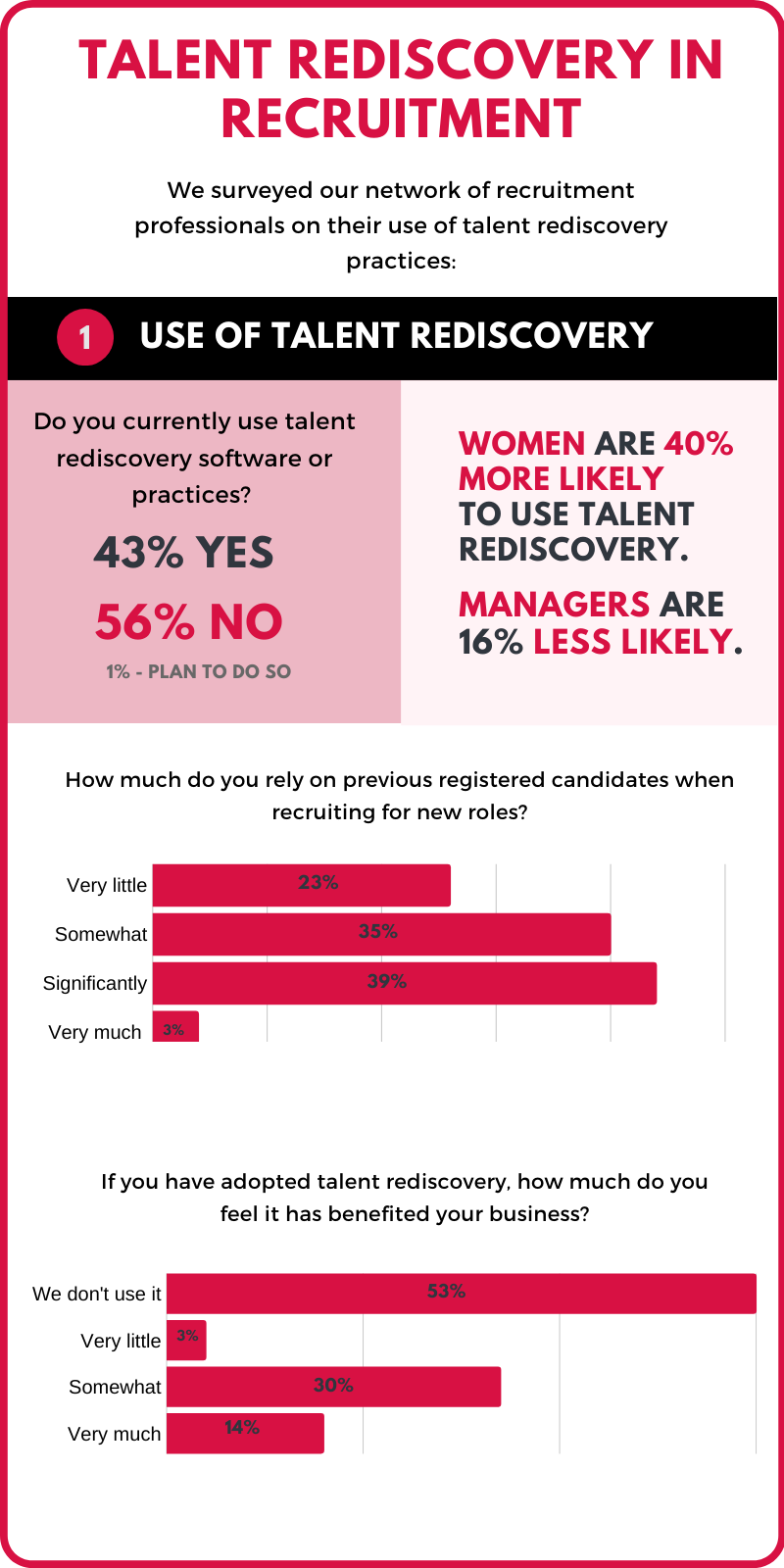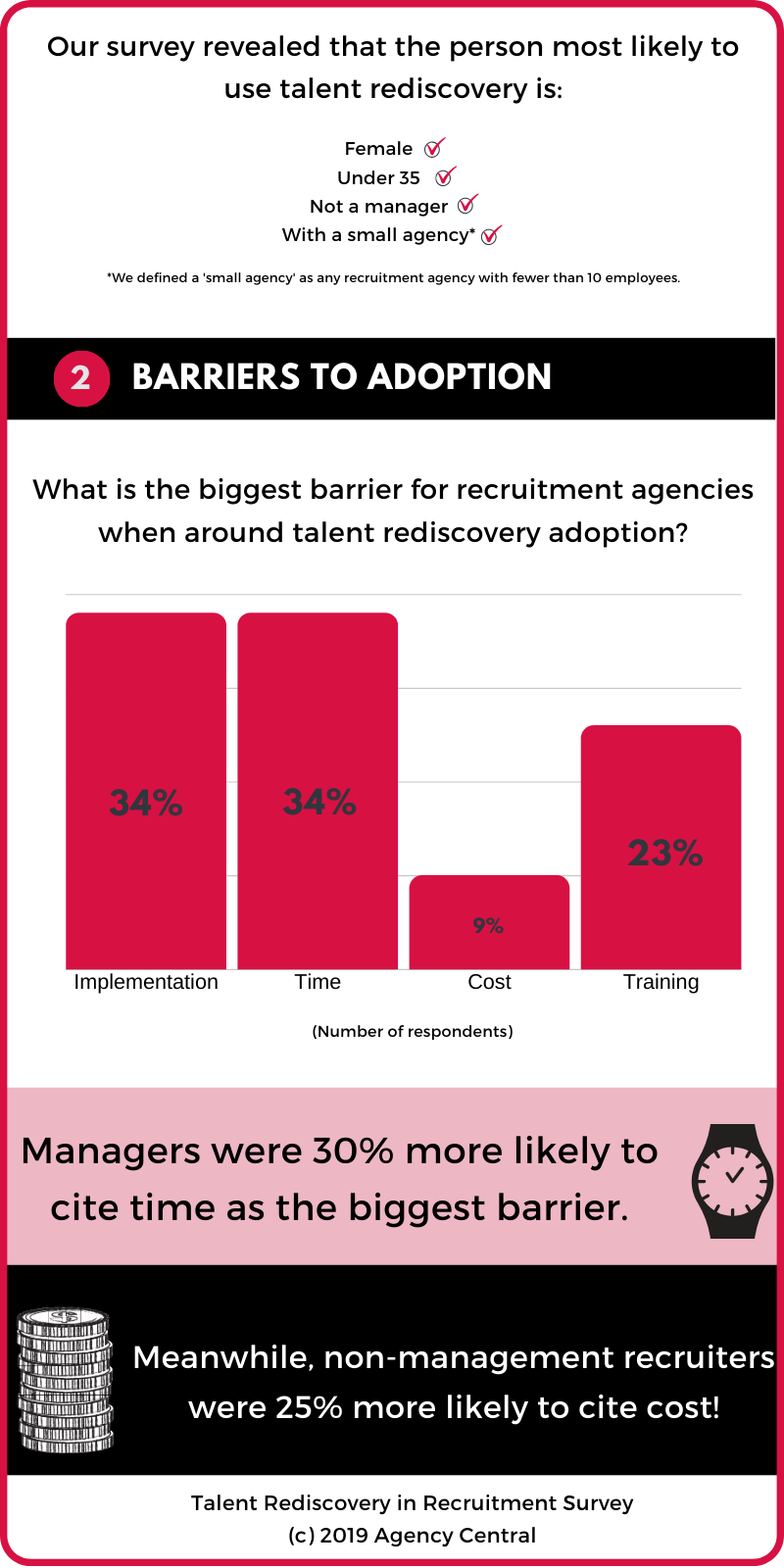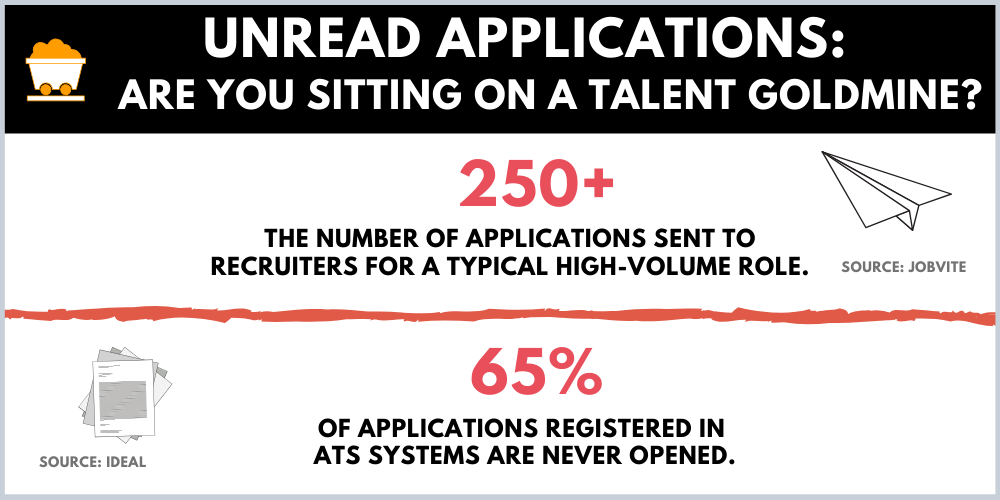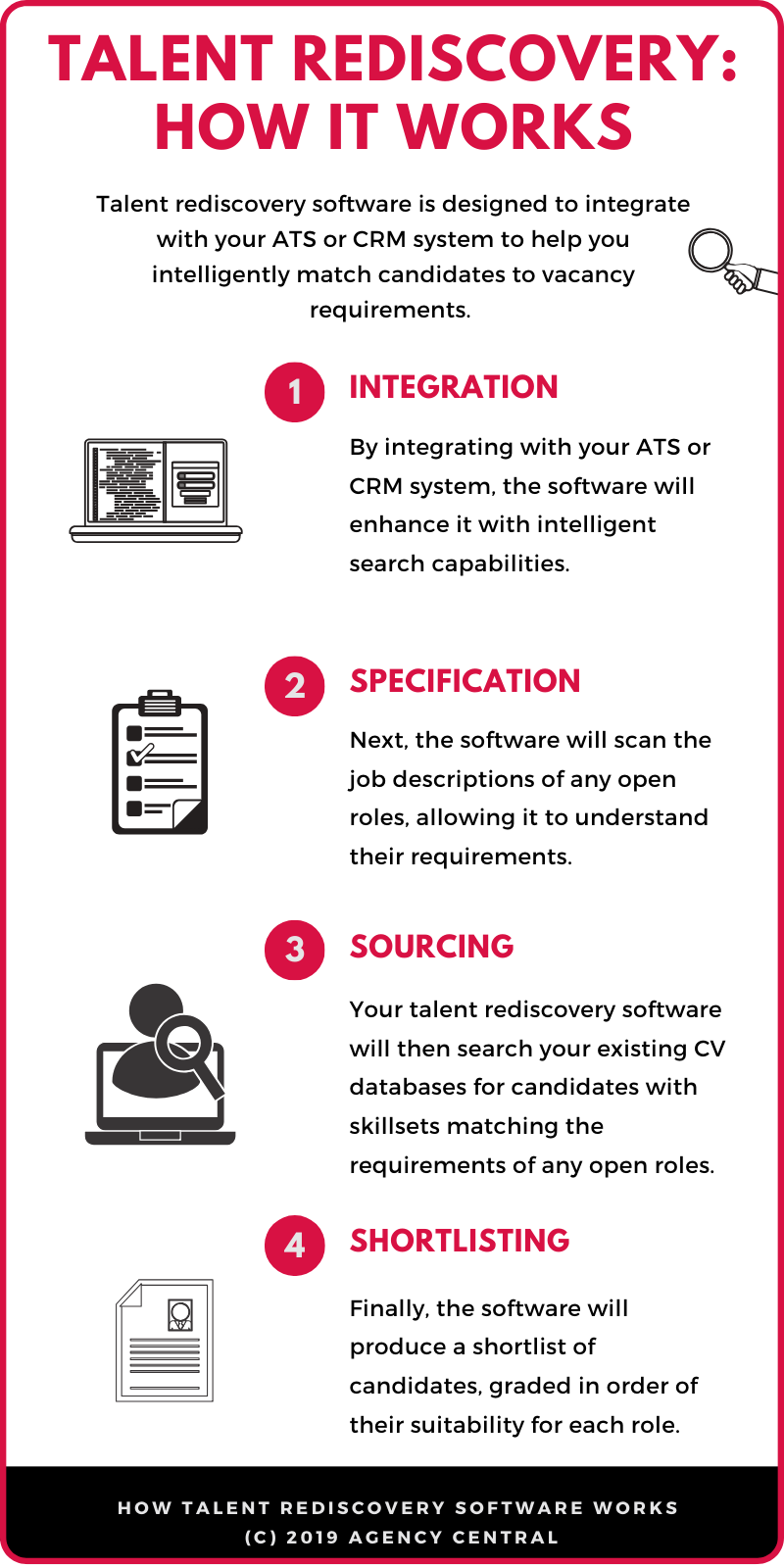Putting together shortlists of qualified candidates from their existing talent pool remains a pain point for many recruiters today. The task of talent rediscovery can present a real challenge, or, for those who master it, a lucrative opportunity!
What is Talent Rediscovery?
According to Ideal, talent rediscovery is defined as:
“ … the ability to automatically screen candidates who applied for a previous role at your company and match them to a current open requirement using your ATS resume database.”
Talent rediscovery not only saves time and money, but focuses the recruiter on relationship building, on a better, more meaningful candidate experience.
Andreea Wade – Chief Executive, Opening
Who is using talent rediscovery?
This is clearly a useful capability for any recruitment professional, but exactly how widespread is the practice of talent rediscovery within the industry – and who is making use of it?
To find out, we surveyed our recruitment network on their use of talent rediscovery tools, practices and the challenges they faced around implementation:


Survey Takeaways
Once we had gathered the data, we were able to build a picture of the type of recruitment professional that was most likely to use talent rediscovery. According to our survey data, this person is:
- Female.
- Under 35.
- In a non-management role.
- Working with a small agency (under 10 employees).
Contrary to our expectations, the data revealed that smaller recruitment agencies and non-management professionals are making the greatest use of talent rediscovery. But, why could this be? Let’s take a look at the bigger picture:
- Managers cited time as the biggest barrier to adoption, suggesting that talent rediscovery is perceived as labour-intensive.
- For larger agencies, the necessary time investment for talent rediscovery adoption would increase, which may explain why their managers are less likely to use it.
- The barrier most cited by non-managers was cost, although in many cases, this would be the perceived cost to their managers, who more typically make financial decisions.
- 74% rely ‘significantly’ or ‘somewhat’ on previously registered candidates when recruiting, which suggests the majority of recruiters could benefit from talent rediscovery, if they do not use it already.
- 94% of those that had adopted talent rediscovery reported that it had benefited their business either ‘very much’ or ‘somewhat’, which indicates that the majority of recruitment businesses should see positive changes after adopting talent rediscovery.
So, it’s clear that talent rediscovery is delivering positive outcomes for a significant number of recruiters. But, how exactly does the process work – and how can you make it work for your agency?
Connecting Qualified Candidates with Opportunity
A small proportion of candidates will be hired the first time they are put forward, but what happens to the majority who are not initially successful? Many of these candidates, who were previously unsuccessful will stand a good chance of making the grade next time around.

Unfortunately, pinpointing these candidates manually can present a significant challenge – and the larger the talent pool, the greater the difficulty! As such, many recruiters will miss the opportunity to place standout talent from within their own database due to time constraints. But, what can be done to prevent these talented professionals from slipping through the net? Any recruiter that wishes to do this must first master talent rediscovery strategy …
Traditional Talent Rediscovery Methods
Before modern talent rediscovery software became available, this would have to be done by manually reviewing candidates’ CVs and contact details. To this day, there remains an element of ‘traditional’ recruiters, still reliant on their ‘Rolodex’. Others may search emails and social profiles using semantic or Boolean terms to identify talent to place in upcoming roles.
When carried out thoroughly, this method can indeed point recruiters to their ‘needle-in-haystack’ candidates, although, as we’ve mentioned previously, time can often be an issue.
AI-powered Talent Rediscovery
Recent advances in AI technology have allowed many forward-thinking recruiters to use software-assisted talent rediscovery to quickly match candidates in their databases to live vacancies.
Here’s a quick explanation of how these tools integrate with ATS and CRM systems to make this process easier:

The Expert View: Getting the Most From Talent Rediscovery
We’ve seen how adopters of talent rediscovery software can save considerable time and effort when it comes to retrieving qualified candidates from their databases, but what are the other benefits? To find out, we spoke to three experts from the recruitment software industry:
Firstly, Andreea Wade, Chief Executive of Opening, explained how aside from improving organisational efficiency, talent rediscovery adoption can augment candidate experience:
“In the case of large agencies or employers, up to 70% of the candidates sourced from Linkedin are already in their Applicant Tracking Systems. Existing databases truly give organisations the opportunity to create their own candidate networks and communities.”
Expanding Talent Pools, Identifying Best-fit Talent
Next, Hiretual Co-founder and CEO Steven Jiang highlighted how talent rediscovery software can aid recruiters hoping to place talent in time-sensitive roles:
“AI-driven talent rediscovery will make it more efficient and effective to not only expand the pool, but to identify the best-fit candidate quickly. It matches millions of profiles to job positions in seconds.”
It’s clear then, that modern talent rediscovery software can remove much of the heavy-lifting associated with the traditional process.
How can recruiters get talent rediscovery working for them?
Finally, we consulted Klimb.io founder Prashanth Thiruvaipati, who explained how recruiters can take advantage of AI tools to augment their talent rediscovery strategy:
“It’s important to understand the context of the recruiting history in detail, so that recruiters can approach a relevant set of candidates. AI can play a significant role in optimising these tasks, by analysing internal databases and self-learning based on past recruitment patterns and profile data.”
Conclusion: The Future of Talent Rediscovery
Recruiters are already witnessing many exciting applications for AI and talent rediscovery, but what can we expect to see in the near future? Phenom People’s Head of Marketing and Communications, Derek Herman shared three predictions with us:
- “Talent acquisition will get comfortable with allowing technology to offload their admin tasks to make room for building relationships with candidates.”
- “Technology and AI will not replace jobs, but rather enhance the performance of people-centric roles.”
- “AI will deduce insights from jobseekers’ interactions on career sites and chatbots to tell recruiters which candidates they should engage in conversation.”
How do you think AI and talent rediscovery will shape the industry’s future? Feel free to leave a comment and share your views. We look forward to reading your ideas.



